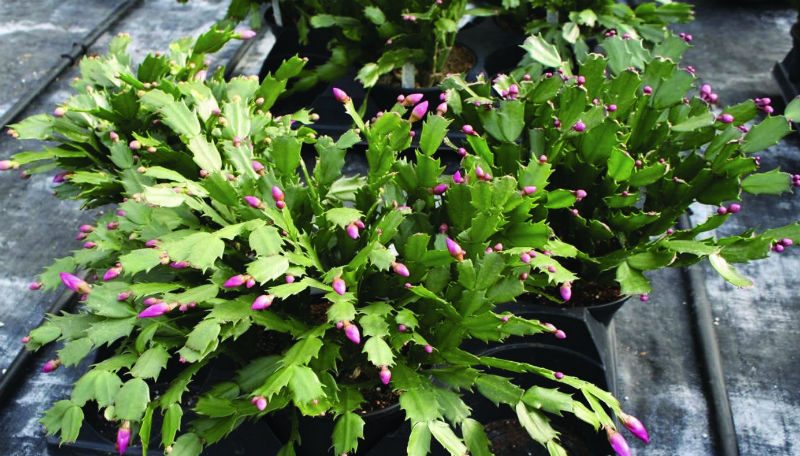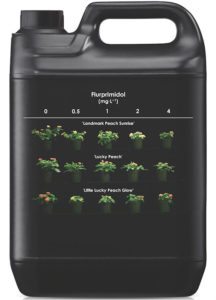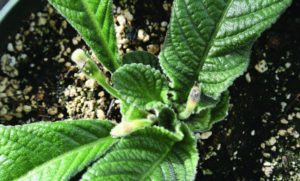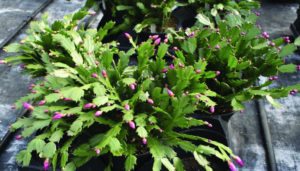
PGR Active Ingredients
What comes to mind when you hear the acronym PGR? Well, there are a few things that may be fitting. The first might be “plant growth retardant,” and that would be one correct answer. Another correct answer would be “plant growth regulator.” What’s the difference between these two? Are there more acronyms?
PGR vs. PGR
Here we have a case of two closely related acronyms. As mentioned earlier, PGR can stand for both plant growth regulators as well as plant growth retardants. Yes, they are surely related, but they are not synonyms or freely interchangeable. All plant growth retardants are plant growth regulators. However, not all plant growth regulators are growth retardants.

Growth regulator is a very broad, encompassing class of compounds that alter plant growth and development. Some growth regulators are growth retardants, inhibiting cell elongation and stem extension. However, there are other plant growth regulators that are used to improve greenhouse crop quality or reduce labor. A review of the most commonly used plant growth regulators will keep you A-OK with PGRs.
Auxin
It is a pretty sure bet to make that auxins were the first growth regulator you ever used. Auxins such as indole-butyric acid (IBA) or naphthalene acetic acid (NAA) are most commonly used to promote adventitious rooting of cuttings during propagation. These compounds are usually suspended in talcum powder or in a liquid alcohol formulation. The basal ends of cuttings can be dipped into them. Repeated dipping of cuttings can reduce sanitization; therefore, talcum formulations can be brushed on to basal ends, while liquid formulations may be sprayed on to basal stem ends or, after sticking, foliage.
Anti-gibberellins
Next to auxin, perhaps no other growth regulator for greenhouse floriculture crop production is as popular as the growth-retarding anti-gibberellin (GA) compounds. This includes the active ingredients ancymidol, chlormequat chloride, daminozide, flurprimidol, paclobutrazol and uniconazole. These chemicals are applied to inhibit unwanted stem elongation for containerized plants. When taken- up by plants, anti-GA compounds inhibit formation of GA and, as a result of lower GA concentrations, excessive elongation is suppressed (Figure 1).
There are a number of different active ingredients that inhibit GA synthesis, including ancymidol (A-Rest, Abide), chlormequat chloride (Cycocel, Citadel), daminozide (B-Nine, Daminozide), flurprimidol (Topflor), paclobutrazol (Bonzi, Piccolo) and uniconazole (Sumagic, Concise). Selecting which active ingredient you’d like to use is going to be based off of the degree of activity you want and application method you’d like to use.
Ethylene-generating Compounds
Ethylene is a plant hormone that influences several different plant processes, including axillary branching, fruit ripening, flower abortion and internode elongation. In the greenhouse, the most common way to expose plants to ethylene during production is to apply ethephon, a plant growth regulator that releases ethylene upon conversion in plant cells.

Ethephon (Florel, Collate) is commonly used to keep herbaceous crops vegetative and is applied as a foliar spray earlier in production to minimize flower bud development while the plants are growing and bulking-up in containers (Figure 2). Branching can also be improved with ethephon applications. Ethylene diminishes apical dominance and release axillary buds to develop into branches. The “Florel Sandwich” is an excellent example of using ethephon for branching.
Ethephon is also used to suppress excessive stem elongation and control plant height. However, unlike the growth retardants we previously discussed, it does not suppress GA synthesis in plants. Rather, it reorients cellular architecture and plants elongate radially and less latiudinally. This is why ethephon-treated plants also seem to have thicker stems.
Gibberellins
While we have discussed compounds that inhibit GA synthesis, there are times when we want to apply GA (ProGibb, Florgib) to greenhouse crops. For example, while most floriculture crops are treated to inhibit stem elongation, cut flowers are a crop where longer stems enhance the quality of cuts. Gibberellins can also be used to replace the flowering requirements for some crops. For example, GA has been shown to replace cold temperatures for breaking dormancy of budded florist azaleas during forcing.
Cytokinins
Cytokinins are another plant hormone that can affect several different processes in plants, from branching to leaf senescence. Configure, the trade name for 6-benzylaminopurine (BA), has been labeled for use for greenhouse crop production to increase lateral branching.
One of the most well-known uses of cytokinins is to increase branching and flower bud number on holiday cacti (Figure 3). Another popular use of BA is to increase the number of shoots on perennials that can be challenging to get adequate vegetative growth or “bulk up” during production. Hosta and coneflowers are two perennials that are frequently treated with BA to improve finished plant quality. Though BA also holds promise for increasing branching on other crops, there is not much information about using it on other crops such as herbaceous annuals, so in-house testing is important to identify appropriate concentrations.

GA + BA
Though we already discussed GA and BA individually, the popularity of the combination of BA + GA warrants discussion. These types of products contain equal concentrations of BA and GA. Why both active ingredients? In some instances, chemicals can have a synergistic effect when they are mixed together, and this is the case with GA + BA.
One of the most popular uses for this combination growth regulator is to reduce lower leaf yellowing. Commonly observed on Easter lilies, especially when Easter is later, lower-leaf yellowing can reduce the marketability of flowering plants. However, applying GA + BA to the lower leaves suppresses leaf senescence and helps keeps leaves green. In addition to diminishing leaf senescence, GA + BA can be used to promote bract expansion of poinsettias. Additionally, if plants are treated with too much anti-GA and over-regulated, GA + BA can be used to promote stem elongation to “grow out” of over-regulation.
Take-home Message
There are a number of different growth-regulating chemicals that can be applied to greenhouse crops. What you use will depend entirely on what you are trying to accomplish. Clearly there are PGRs (regulators, that is!) that can be used to influence a wide range of plant processes. Armed with the knowledge of what you have available to use, consider how you can use growth regulators to turn your good crops into great crops.


 Video Library
Video Library 




















